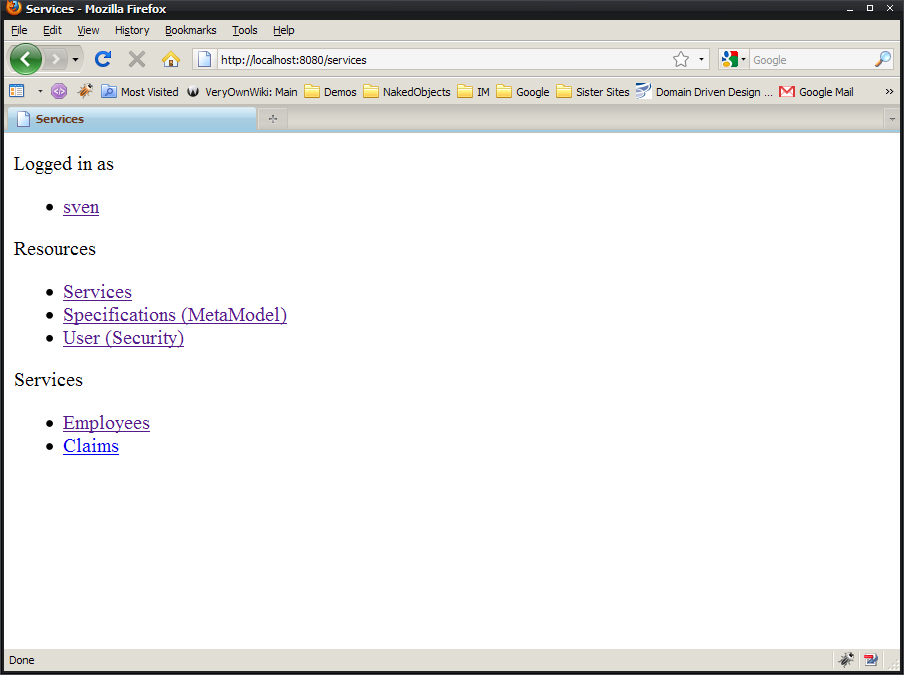The /services link indicated in Section 3.1, “HomePageResource” corresponds to the
ServicesResource:
import javax.ws.rs.GET;
import javax.ws.rs.Path;
import javax.ws.rs.Produces;
public interface ServicesResource {
@GET
@Produces( {"application/xhtml+xml", "text/html"} )
@Path("/")
public String services();
}The implementation of this interface in Restful
Objects viewer (ServicesResourceImpl)
also defines a @Path("/services") for the class as a whole.
This therefore defines a URL in the form
/services supporting the GET
method.
Note
I believe that the @Path("/services") annotation
should reside on the interface, not the implementation. This seems to
be a limitation with RestEasy, the underlying library used by
Restful Objects. Certainly for RestEasy 1.0.2 and
also 1.1-rc2 this did not work, however.
Here's the resource that's returned, as shown in a browser:

The first two sections are the same; what's new is the
list of services, corresponding to the registered services in
nakedobjects.properties. The
XHTML for this is:
<?xml version="1.0"?>
<html>
<head><title>Services</title></head>
<body id="body">
...
<div class="nof-section">
<p class="nof-section">Services</p>
<ul class="nof-services">
<li>
<a href="/object/OID:1" rel="service" rev="services" class="nof-service">
Employees
</a>
</li>
<li>
<a href="/object/OID:2" rel="service" rev="services" class="nof-service">
Claims
</a>
</li>
</ul>
</div>
</body>
</html>Again, we can use XPath to pull back the resources:
//a[@class='nof-service']/@href will return the hyperlinks to the object resources representing these services, in the form /object/OID.
And let's look at object resources next.